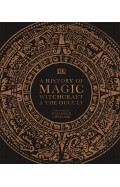Napoleon’s Plunder and the Theft of Veronese’s Feast
By: Cynthia Saltzman
-
Rs 4,796.00
- Rs 5,995.00
- 20%
You save Rs 1,199.00.
Due to constant currency fluctuation, prices are subject to change with or without notice.
Taking without taste, without choice, is ignorance and near vandalism.’
― The French Directory to Napoleon Bonaparte, 1796
Napoleon’s Plunder chronicles one of the most spectacular art appropriation campaigns in history and, in doing so, sheds new light on the complex origins of what was once called the Musée Napoléon, now known as the Louvre.
In 1796, four years after the founding of the First French Republic and only two days after his marriage to Josephine de Beauharnais, Napoleon Bonaparte left Paris to take command of his first campaign in Italy, aged only twenty-six. One year later, Napoleon’s army was in Venice and his commissioners were determining which great Renaissance artworks to bring back to France. Among the paintings the French chose was The Wedding Feast at Cana by Paolo Veronese, a vast masterpiece that had hung in the refectory of San Giorgio Maggiore since it was painted in 1563.
Once pulled from the wall, the Venetian canvas crossed the Mediterranean packed among paintings commandeered from Venice and made its way by river and canal to Paris where Napoleon gathered his spoils of war – treasures from the cities of Rome, Milan, and later Berlin and Vienna. In 1801 the Veronese was placed on triumphant display in the Louvre, the former palace of the French kings, which had been transformed into a public museum that ostensibly belonged to the French people, but which also functioned as a monument to Napoleon’s power.
Saltzman interweaves the stories of Napoleon’s military campaigns, uncovering the treaties through which he obtained his loot, with the histories of the plundered works themselves, exploring how these masterpieces came into being. As much as a story of military might, this is an account of one of the most ambitious cultural projects ever conducted.
With 46 illustrations, 14 in colour
Taking without taste, without choice, is ignorance and near vandalism.’
― The French Directory to Napoleon Bonaparte, 1796
Napoleon’s Plunder chronicles one of the most spectacular art appropriation campaigns in history and, in doing so, sheds new light on the complex origins of what was once called the Musée Napoléon, now known as the Louvre.
In 1796, four years after the founding of the First French Republic and only two days after his marriage to Josephine de Beauharnais, Napoleon Bonaparte left Paris to take command of his first campaign in Italy, aged only twenty-six. One year later, Napoleon’s army was in Venice and his commissioners were determining which great Renaissance artworks to bring back to France. Among the paintings the French chose was The Wedding Feast at Cana by Paolo Veronese, a vast masterpiece that had hung in the refectory of San Giorgio Maggiore since it was painted in 1563.
Once pulled from the wall, the Venetian canvas crossed the Mediterranean packed among paintings commandeered from Venice and made its way by river and canal to Paris where Napoleon gathered his spoils of war – treasures from the cities of Rome, Milan, and later Berlin and Vienna. In 1801 the Veronese was placed on triumphant display in the Louvre, the former palace of the French kings, which had been transformed into a public museum that ostensibly belonged to the French people, but which also functioned as a monument to Napoleon’s power.
Saltzman interweaves the stories of Napoleon’s military campaigns, uncovering the treaties through which he obtained his loot, with the histories of the plundered works themselves, exploring how these masterpieces came into being. As much as a story of military might, this is an account of one of the most ambitious cultural projects ever conducted.
With 46 illustrations, 14 in colour
Napoleon’s Plunder and the Theft of Veronese’s Feast
By: Cynthia Saltzman
Rs 4,796.00 Rs 5,995.00 Ex Tax :Rs 4,796.00
Zubin Mehta: A Musical Journey (An Authorized Biography)
By: VOID - Bakhtiar K. Dadabhoy
Rs 630.00 Rs 1,050.00 Ex Tax :Rs 630.00
The Origins of Political Order From Prehuman Times to the French RevolutioN
By: Francis Fukuyama
Rs 3,505.50 Rs 3,895.00 Ex Tax :Rs 3,505.50
Manning Up: How the Rise of Women Has Turned Men into Boys
By: Kay Hymowitz
Rs 796.00 Rs 995.00 Ex Tax :Rs 796.00
The Obama Syndrome: Surrender At Home War Abroad
By: Tariq Ali
Rs 1,165.50 Rs 1,295.00 Ex Tax :Rs 1,165.50
The Quest For Meaning: Developing A Philosophy Of Pluralism
By: Tariq Ramadan
Rs 1,255.50 Rs 1,395.00 Ex Tax :Rs 1,255.50
The Pakistan US Conundrum Jihadists The Military And The People The Struggle For Control
By: Yunas Samad
Rs 1,255.50 Rs 1,395.00 Ex Tax :Rs 1,255.50
An Enemy We Created: The Myth Of The Taliban Al Qaeda Merger In Afghanistan 19702010
By: Alex Strick van Linschoten
Rs 4,200.00 Rs 5,250.00 Ex Tax :Rs 4,200.00
WikiLeaks: Inside Julian Assanges War on Secrecy
By: David Leigh & Luke Harding
Rs 680.00 Rs 850.00 Ex Tax :Rs 680.00
No recently viewed books available at the moment.
Zubin Mehta: A Musical Journey (An Authorized Biography)
By: VOID - Bakhtiar K. Dadabhoy
Rs 630.00 Rs 1,050.00 Ex Tax :Rs 630.00
Napoleon’s Plunder and the Theft of Veronese’s Feast
By: Cynthia Saltzman
Rs 4,796.00 Rs 5,995.00 Ex Tax :Rs 4,796.00














-120x187.jpg?q6)






-120x187.jpg?q6)



-120x187.jpg?q6)



